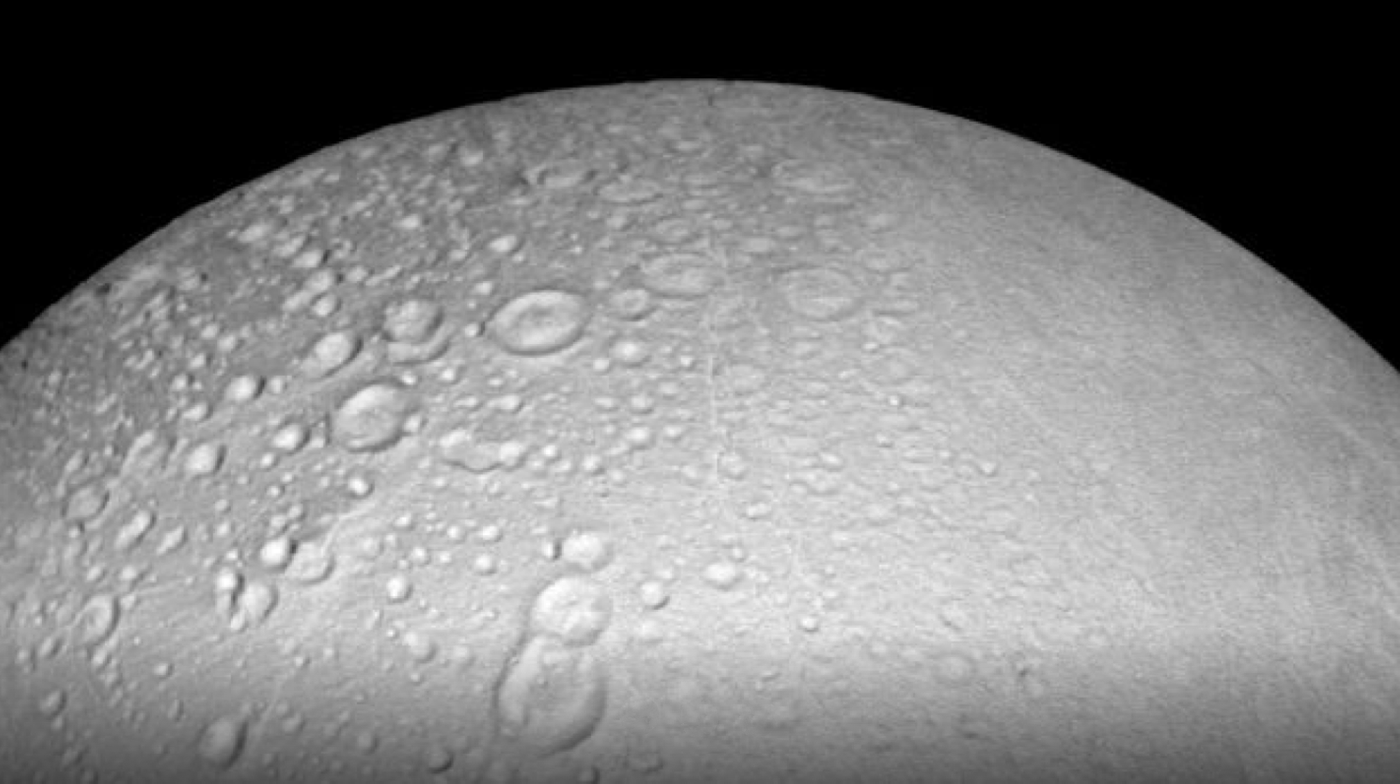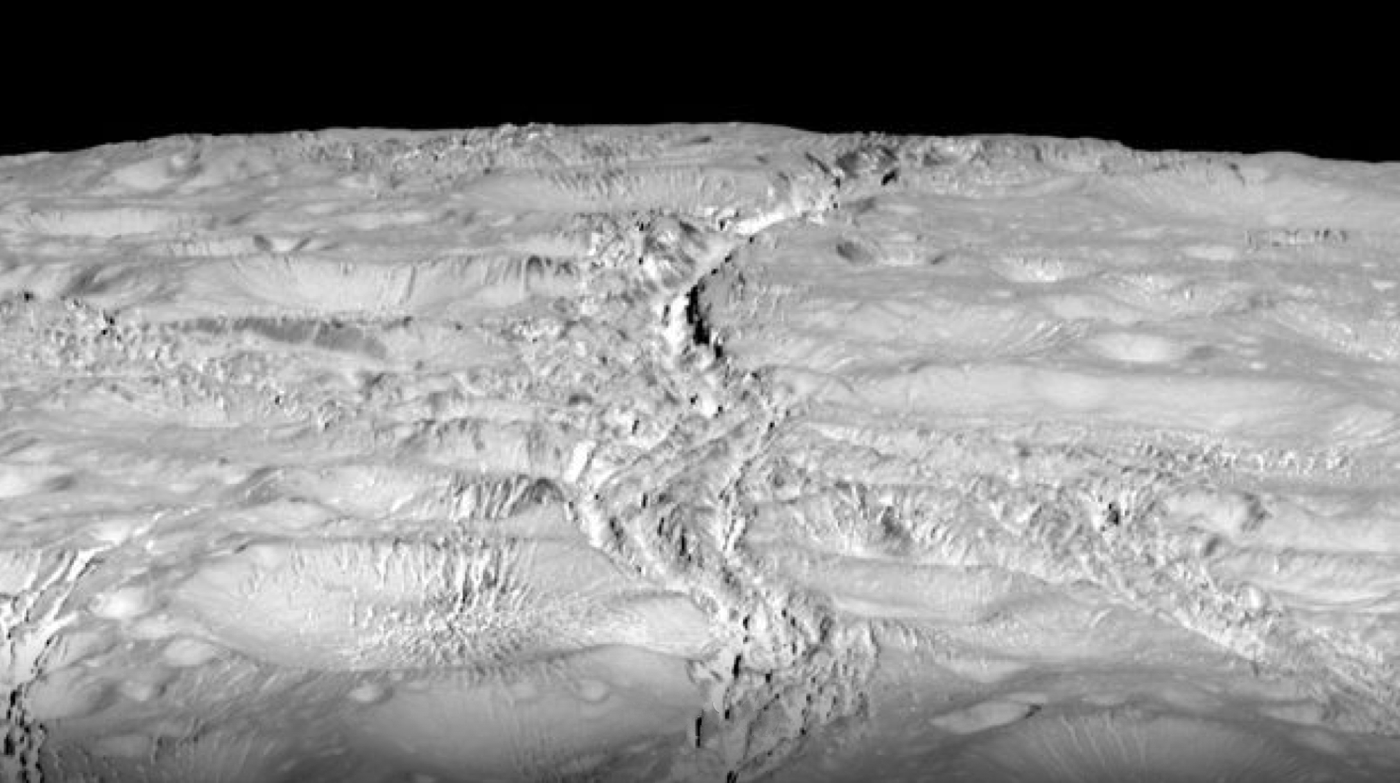NASA's Cassini Spacecraft Sends Back Close-up Images of Enceladus' Surface
NASA, in collaboration with the ESA, has been exploring Saturn and its Moons since 2004. Last month, NASA revealed that one of Saturn’s Moons, Enceladus, likely has a global ocean underneath its crust due to the fact that there’s a strange wobble to the crust as it orbits Saturn and that there are mist streams on the south side of the planet.
This month, however, Cassini has gotten close enough to Enceladus to grab some close-up pictures in high resolution. The icy surface of Enceladus’ North Pole has been detailed up close, showing a very detailed surface with stark changes from one area of the surface of Enceladus to another. There is nothing uniform about this moon’s surface whatsoever.



Taken on October 14th by Cassini’s wide-angle camera (PIA20010) about 1,142 miles above Enceladus’ surface, these images detail just how complex the surface of Enceladus really is.
Although NASA says that astronomers expected the surface of Enceladus to be “heavily cratered,” what they found what a surface of largely contrasting textures.
"The northern regions are crisscrossed by a spidery network of gossamer-thin cracks that slice through the craters," said Paul Helfenstein, a member of the Cassini imaging team at Cornell University, Ithaca, New York. "These thin cracks are ubiquitous on Enceladus, and now we see that they extend across the northern terrains as well."
During the fly-by, Cassini took many photographs, which will continue to be transmitted over the course of the next few days. On October 28th, it will come back around for another fly-by, except it’ll be a mere 30 miles from Enceladus’ surface and will be of the moon’s Southern surface, giving astronomers the most detailed photographs yet of the opposite side of the moon.
Here, NASA hopes to learn more about those mist streams that are spraying from the moon’s crust, likely because of the global ocean underneath the surface. Hopefully, Cassini will be able to determine what these streams are composed of, answering further questions about the moon’s composition.
Then, on December 19th, a final meeting between Cassini and Enceladus will occur, allowing scientists to measure the moon’s interior heat levels, from about 3,106 miles up above the surface.
Because astronomers are interested in whether or not that global ocean is habitable by any forms of life, the information about its chemical makeup and temperature is very important to feed speculation. Fortunately, we won’t have to wait too much longer for that data.
Source: NASA








